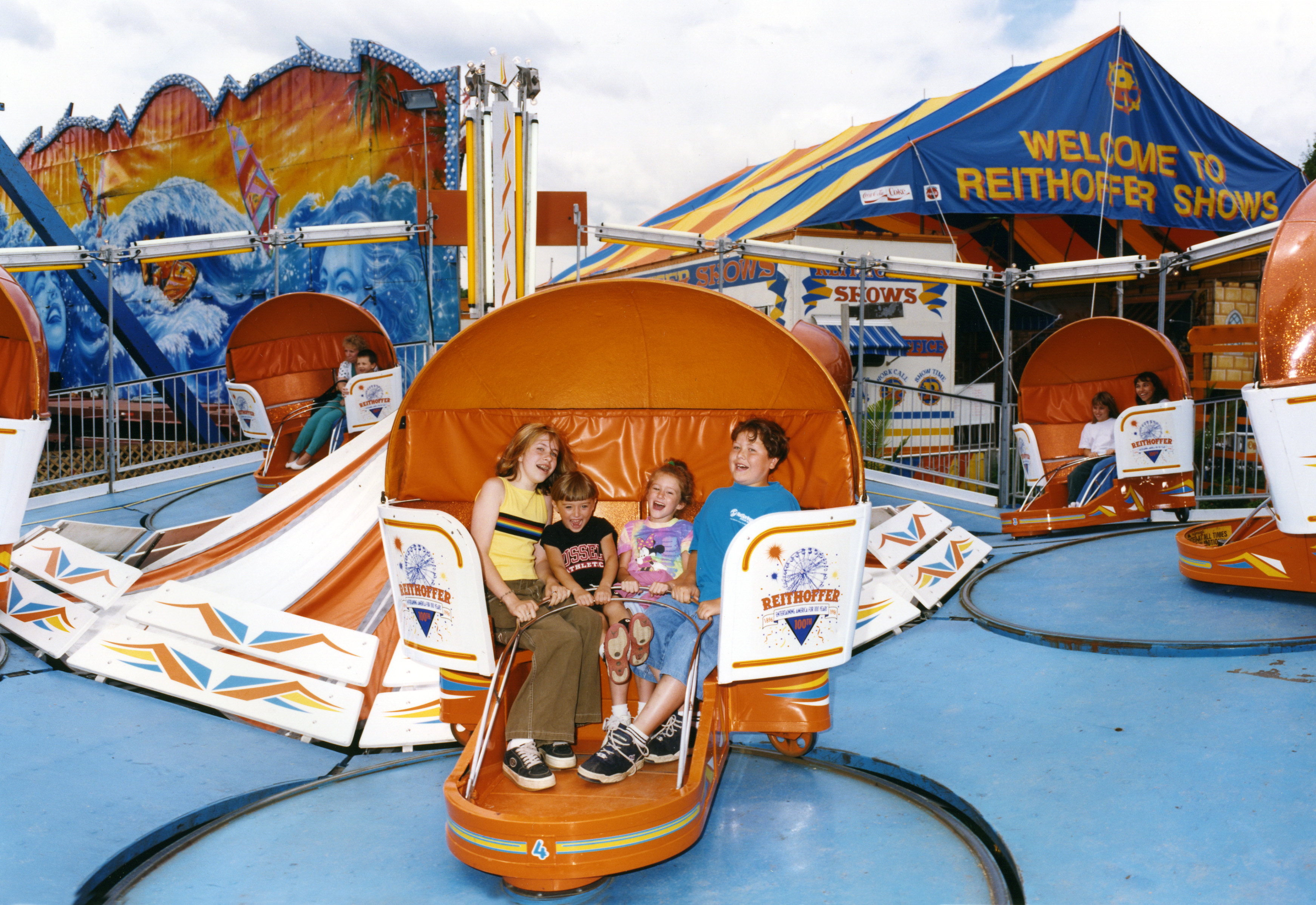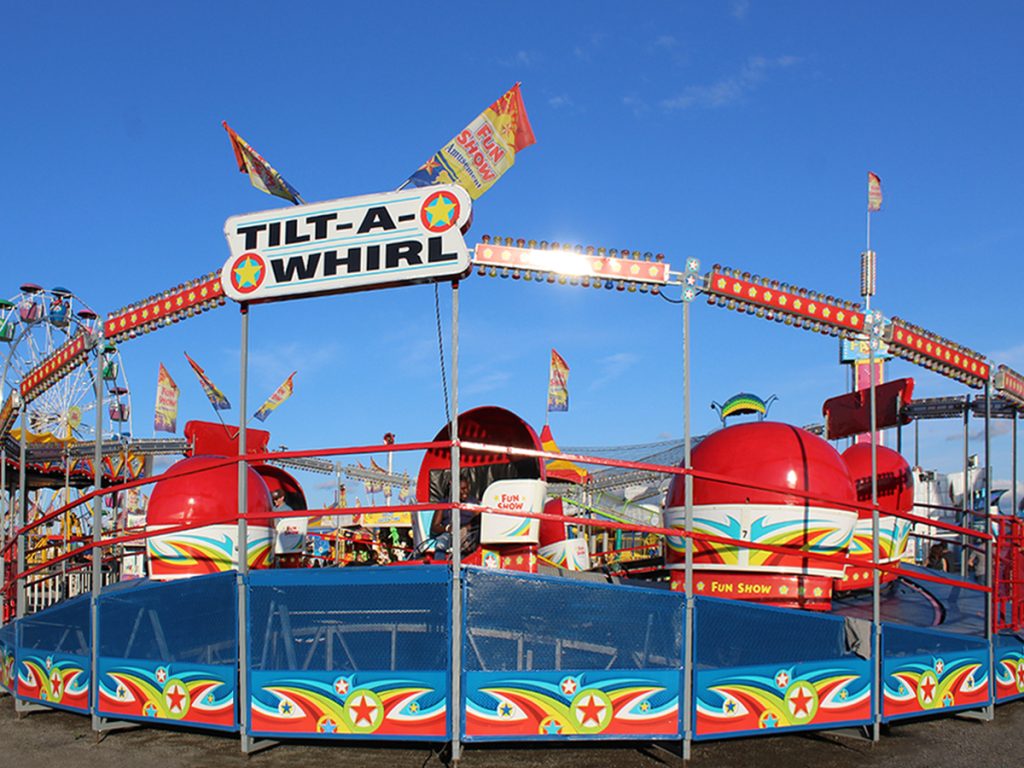Historical Origins and Evolution

Tilt a whirl – The Tilt-A-Whirl, a beloved amusement park ride, has a rich history that spans over a century. Its origins can be traced back to the early 20th century, when amusement park rides were undergoing a period of rapid innovation and experimentation.
In the dizzying spin of the Tilt-A-Whirl, the thrill of uncertainty takes hold. Just as in the world of sports, where underdogs defy the odds ( underdog definition ), the Tilt-A-Whirl embraces the unexpected, leaving riders exhilarated by the unpredictable journey.
Early Designs and Invention
The Tilt-A-Whirl was invented in 1926 by Herbert Sellner, a German immigrant and amusement ride designer. Sellner’s original design consisted of a circular platform that rotated on a central axis, with individual cars suspended from the platform. The cars were free to tilt and spin as the platform rotated, creating a thrilling and disorienting experience for riders.
In the realm of amusement park rides, the Tilt-A-Whirl reigns supreme, its dizzying spins and gravity-defying twists leaving riders exhilarated. Yet, the ride’s erratic nature mirrors the chaotic dance of life, where unexpected turns and bumps can disrupt our carefully laid plans.
Just as the bumper to bumper story unfolds on the asphalt, so too does the Tilt-A-Whirl’s unpredictable journey reflect the ebb and flow of our own lives.
Subsequent Modifications
Over the years, the Tilt-A-Whirl has undergone numerous modifications to improve its safety, reliability, and aesthetic appeal. In the early 1930s, Sellner added a series of safety features, including seat belts and a central control panel for the operator. In the 1950s, the ride was redesigned with a more streamlined and modern appearance, featuring brightly colored cars and a central tower.
The Tilt-A-Whirl’s dizzying ascent and rapid descent evoke a sense of exhilaration that lingers long after the ride has ended. Like the thrill of a tailgate story , where the anticipation of the unknown mingles with the joy of shared experience, the Tilt-A-Whirl offers a fleeting glimpse into the realm of pure, unadulterated fun.
Impact on the Amusement Park Industry, Tilt a whirl
The Tilt-A-Whirl quickly became a popular attraction at amusement parks around the world. Its unique combination of thrills and affordability made it a favorite among families and thrill-seekers alike. The ride’s popularity helped to establish the Tilt-A-Whirl as a classic amusement park staple, and it remains a popular attraction to this day.
Tilt-a-Whirl, with its spinning and swirling motion, brings a sense of exhilaration and dizzying delight. Yet, as the ride slows and the lights fade, a different kind of excitement awaits. Tailgate movies , with their cozy atmosphere and shared cinematic experiences, offer a unique blend of nostalgia and modern entertainment.
As the stars twinkle above, the echoes of Tilt-a-Whirl’s laughter mingle with the laughter and whispers of moviegoers, creating a tapestry of unforgettable memories.
Enduring Popularity
The Tilt-A-Whirl has endured as a popular amusement park ride for over a century due to its timeless appeal. The ride’s simple yet thrilling design continues to provide a unique and exciting experience for riders of all ages. Its enduring popularity is a testament to the ingenuity of its inventor and the timeless appeal of classic amusement park rides.
Engineering and Mechanics: Tilt A Whirl

The Tilt-A-Whirl operates on the principles of centrifugal force and centripetal force. Centrifugal force is the outward force that pushes objects away from the center of rotation, while centripetal force is the inward force that pulls objects towards the center of rotation. When the Tilt-A-Whirl is in operation, the rotating platform creates a centripetal force that pulls the swinging cars towards the center of the platform. This force is counteracted by the centrifugal force that pushes the cars outward. The result is a circular motion that causes the cars to swing back and forth.
Components
The Tilt-A-Whirl consists of several key components, including the central hub, the rotating platform, and the swinging cars. The central hub is a large, stationary structure that supports the rotating platform. The rotating platform is a circular platform that is mounted on the central hub. The swinging cars are suspended from the rotating platform by chains or cables.
Safety Mechanisms
The Tilt-A-Whirl is equipped with several safety mechanisms to ensure the safety of riders. These mechanisms include safety bars that lock into place to prevent riders from falling out of the cars, and a speed governor that limits the speed of the ride. The ride is also inspected regularly by qualified personnel to ensure that it is operating safely.
Cultural Significance and Impact

The Tilt-A-Whirl holds a unique place in American popular culture as an iconic symbol of amusement park fun. Its distinctive spinning and tilting motion has captured the imaginations of generations of riders, creating lasting memories and a sense of nostalgic charm.
Representation in Popular Culture
The Tilt-A-Whirl has been featured prominently in numerous movies, television shows, and music videos. In the 1978 film “Grease,” the ride serves as a backdrop for a memorable dance scene between Danny and Sandy. It has also appeared in popular television shows such as “The Simpsons,” “Seinfeld,” and “Friends.”
Nostalgic Appeal
The Tilt-A-Whirl evokes a powerful sense of nostalgia for many people. Its simple yet thrilling design recalls a simpler time when amusement parks were a place of carefree fun and adventure. The ride’s distinctive sounds and smells transport riders back to their childhood memories, creating a sense of joy and wonder.
The vibrant colors and whimsical movements of the Tilt-A-Whirl, a classic amusement park ride, create a symphony of chaos. Its spinning, twirling cars evoke a sense of dizzying exhilaration. Yet, amidst the pandemonium, there is a rhythm to the madness, much like the interconnected lives depicted in the “Bumper to Bumper Story” here.
Just as the cars on the Tilt-A-Whirl collide and separate, so too do the characters in the story navigate the complexities of relationships and the ebb and flow of time.